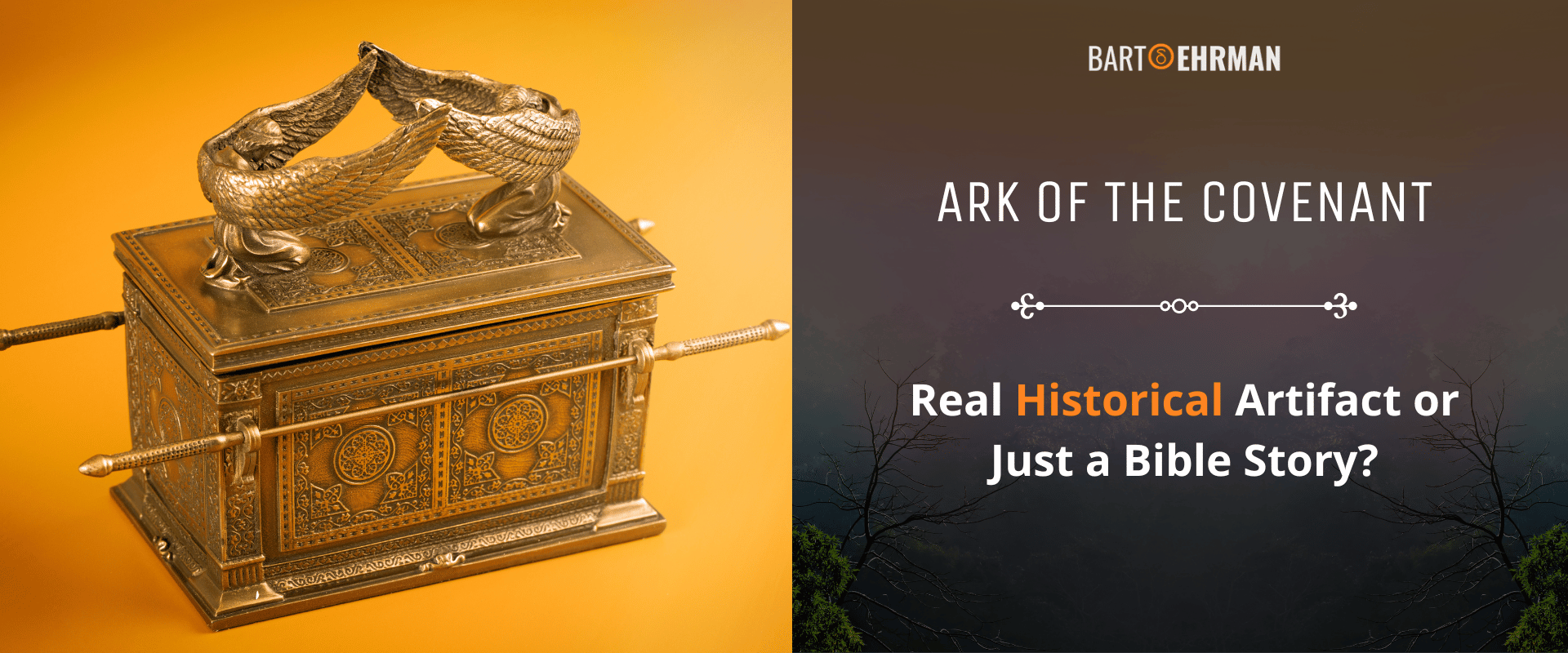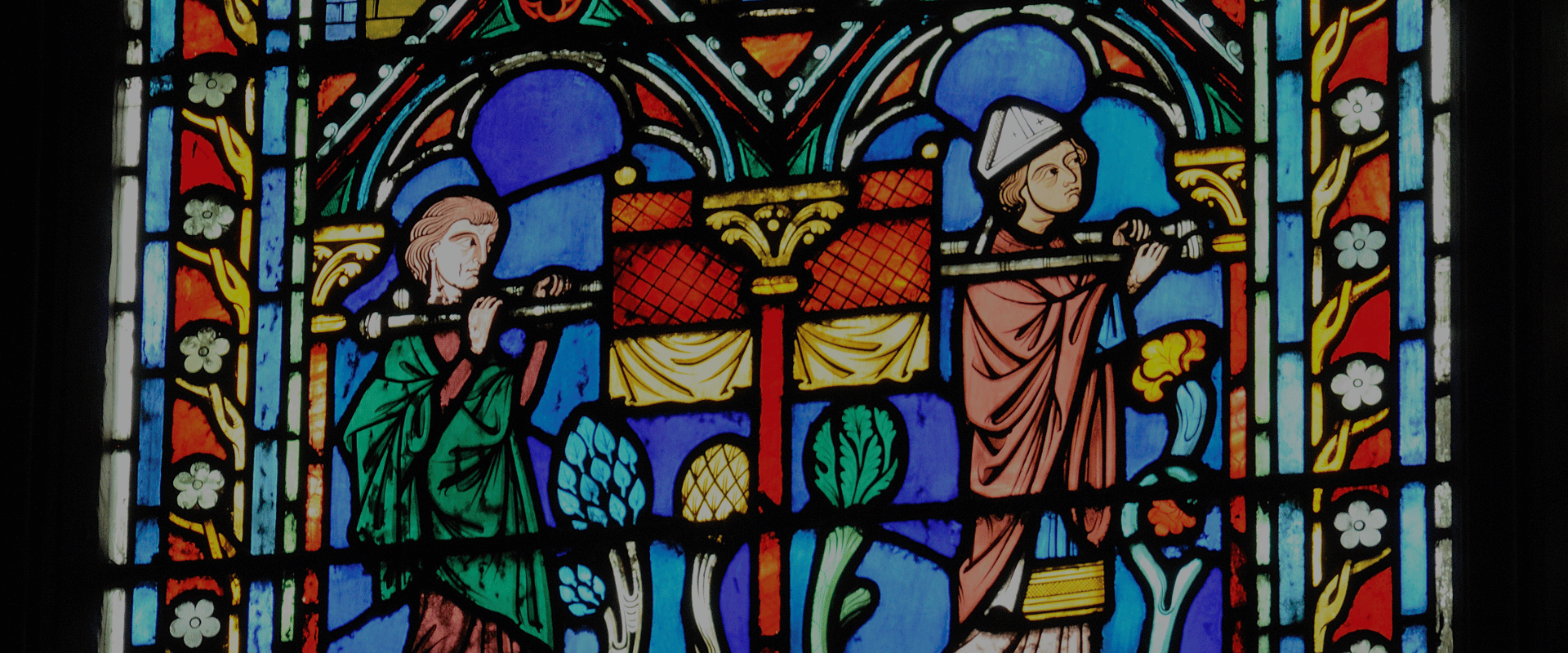Ark of the Covenant: Real Historical Artifact or Just a Bible Story?

Written by Joshua Schachterle, Ph.D
Author | Professor | Scholar
Author | Professor | BE Contributor
Verified! See our editorial guidelines
Verified! See our guidelines
Date written: May 28th, 2024
Disclaimer: The views and opinions expressed in this article belong to the author and do not necessarily match my own. - Dr. Bart D. Ehrman
The Ark of the Covenant, a revered artifact in biblical history, holds a mystique that transcends its physical form. From its divine origins in the book of Exodus to its enigmatic disappearance from the biblical narrative, the Ark has captivated theologians, historians, and adventurers alike.
But is the Ark of the Covenant real? Can we confirm any of the claims the Bible makes about it? Do we know where it is today? I’ll answer these questions and more in this article.

What Is the Ark of the Covenant?
We first encounter the Ark in the book of Exodus. When Moses is communing with God on Mount Sinai for 40 days, God instructs him to have the Ark built when he goes back to the people below. According to Exodus 25, God instructs Moses to have an Ark – really a chest or a box – built out of acacia wood. One of the main purposes of the Ark initially is to hold the tablets of the Ten Commandments. The Ark is later built at Moses’ behest by two skilled Israelite artisans named Bezalel and Oholiab (Exodus 31:1-6).
God gives Moses very precise measurements for the Ark’s construction, saying that it must be “two and a half cubits long, one and a half cubits wide, and one and a half cubits high.” A cubit, by the way, was an ancient unit of measurement based on the length from the elbow to the longest finger (about 1.5 feet). This would have made the Ark roughly 52×31×31 inches. It was then to be covered in a thin layer of gold, inside and out.
Additionally, God commands that four gold rings be fastened to the chest’s four corners. Through these rings, poles made of acacia wood overlaid with gold are to be inserted for carrying the Ark. The poles are never to be removed from the rings.
To cover the box, there is to be an intricate lid made of gold, known as the mercy seat (some translations simply call it a cover). God then instructs that the mercy seat is to have two golden statues of cherubim placed, one on each end. These cherubim, far from being mere decoration, serve an important role:
And the cherubim shall have their wings spread upward, covering the mercy seat with their wings and facing one another; the faces of the cherubim are to be turned toward the mercy seat. Then you shall put the mercy seat on top of the ark, and in the ark you shall put the testimony which I will give to you. There I will meet with you; and from above the mercy seat, from between the two cherubim which are upon the ark of the testimony, I will speak to you about every commandment that I will give you for the sons of Israel. - Exodus 25:20-22
The implication is that the mercy seat is God’s throne, a physical place from which he will rule over his people.
After the Ark is built, the Israelites carry it with them during their forty years of wandering in the desert with Moses. Whenever they stop and camp, the Ark is placed into a special “room”, blocked off by a curtain, within an intricately-made mobile tent of worship known as the Tabernacle.
In Joshua 3, after the death of Moses, his replacement Joshua continues to have the Ark carried with them as the Israelites head into the Promised Land. When they arrive at the banks of the Jordan River, Joshua instructs that the Ark be carried in front to lead the people across. During this crossing, the riverbed under their feet runs temporarily dry through the power of the Ark, allowing all the Israelites to cross easily. The Ark is also weaponized, however.
In Joshua 6, before the battle of Jericho, God commands that the Ark be carried around the city once a day for six days, accompanied by armed men and people playing rams’ horns as musical instruments. On the seventh day, the Ark is carried around the city seven times and when the ram’s horns are blown, the walls of the city collapse, allowing the Israelites to enter in force. It’s understood that the power of the Ark, the conduit for God’s power, allowed this to happen.
Much later, the Israelites decide to carry the Ark into battle with the Philistines (it worked in Jericho, right?). However, the Israelites suffer a crushing defeat and the Philistines take the Ark, likely believing they can co-opt its power for themselves. But when the Philistines take the Ark to their own land, it does not go well.
At the Philistine city of Ashdod, they place it in the temple which houses the idol of their chief god, Dagon. 1 Samuel 5 says that the next morning, the citizens of Ashdod find that Dagon is lying face down in front of the Ark as if prostrating to it. They set it back up but find a similar tableau the next morning, this time with Dagon’s hands also cut off.
Next, the people of Ashdod are struck by terrible misfortunes, including tumors and a plague of rodents throughout the city. Eventually, the Philistines get the picture and return the Ark to the Israelites, who put it in the city of Kirjath-jearim for safekeeping.
When David becomes king, he orders that the Ark be removed from Kirjath-jearim and taken to his capital city of Zion, later renamed Jerusalem. However, in the process of moving the Ark, one of the drivers of the cart on which it is being transported touches the Ark to steady it and immediately falls dead. Eventually, David (very carefully) installs the Ark in a special prayer tent in Zion, the Temple not having yet been built.
David’s son Solomon builds the first Jewish Temple with a special room to house the Ark. Soon after this, however, the Ark disappears from the biblical story.
While the Ark is not specifically mentioned in the story of the Babylonian exile, later Rabbis would speculate about whether it had been taken by the Babylonians or not. Some argued that the Babylonians had stolen it when they conquered Jerusalem while others said it must have been well-hidden so that the Babylonians couldn’t take it.
The Tosefta, a rabbinic work written near the end of the 2nd century CE, argues that Josiah, the king of Judah, stored away the Ark to keep it safe.
What is in the Ark of the Covenant?
While the Hebrew Bible only says that the tablets of the Ten Commandments are placed inside it, the Tosefta says it contained the tablets of the Ten Commandments along with a jar of manna, a jar containing holy anointing oil, and the rod of Aaron which had spontaneously budded. Hebrews 9:4 almost agrees, saying it contained "the golden pot that had manna, and Aaron's rod that budded, and the tablets of the covenant."
All the objects listed represent both God’s power and his connection with his people.
Is the Ark of the Covenant Real?
Stories of the Ark have all the hallmarks of legends. There are special instructions directly from God on how to build it and miracles – both benevolent and malevolent – occur in the Ark’s presence. But was there a real Ark of the Covenant?
Scholars generally believe that the Ark or an object like it did exist as a supposed conduit, or maybe just a symbol, for the power of Israel’s God. Archaeologists have found strong evidence of cultic or religious activity from the 8th to the 7th centuries BCE at Kirjath-jearim, the place where the Ark was supposed to have been deposited for twenty years according to the biblical narrative. This evidence includes a large, raised podium on which an object the purported size of the Ark might have rested, possibly in a shrine.
Thomas Römer suggests that the Ark might have originally carried sacred stones similar to those carried by early Bedouins. He hypothesizes that these “stones” may actually have been either a statue of Yahweh, Israel’s God, or a pair of statues depicting both Yahweh and his companion goddess Asherah. In other words, the idea for such a chest could have been copied from the Bedouins.
Scott Noegel, on the other hand, contends that the similarities between the Bedouin chests and the Ark are less than persuasive. The Bedouin chests do not have the Ark's structure, cultic role, or a system of transport using rings and poles. In addition, Bedouin chests were not viewed as the throne of a god, they were not covered in gold, had no decorative angels on them, and had no restrictions on who could touch them.
Instead, Noegel proposes that an ancient Egyptian object called a Bark is a more probable model for the Israelite Ark. The Bark was a wooden box which had all of the qualities listed above which the Bedouin chest did not have. Noegel adds that the Egyptians also put written covenants beneath the feet of idols, a further parallel to the placement of the tablets of the Ten Commandments inside the Ark.

Where Is the Ark of the Covenant Now?
Since the Ark disappeared from the biblical record, many people have searched for and speculated about it, some even claiming to have found its current location. I’ll mention just a few of these here.
In 2 Maccabees, one of the books of the Apocrypha written around 100 BCE, the prophet Jeremiah is warned by God of the imminent Babylonian conquest. He therefore takes the Ark and the Tabernacle and buries them in a cave, declaring that they will remain here until “the time that God should gather His people again together, and receive them unto mercy." This cave has never been located, however.
A Rabbinic document known as Midrash Tanhuma says that the Ark was at one time in Rome:
Rabbi Eliezer ben José stated that he saw in Rome the mercy-seat of the temple. There was a bloodstain on it. On inquiry he was told that it was a stain from the blood which the high priest sprinkled thereon on the Day of Atonement.
Because no empirical evidence of this has been found in Rome, the claim is all but impossible to verify.
Finally, the Ethiopian Orthodox Church claims to have the Ark under guard in the Ethiopian city of Axum. A medieval Ethiopian document claims that Menelik I, first emperor of Ethiopia in the 10th century BCE, brought the Ark to Ethiopia. Menelik argued that this was its rightful place since Solomon had met with the Ethiopian Queen of Sheba, making a special relationship between Israel and Ethiopia (I Kings 10).
Unfortunately, the Church does not allow anyone to see this object and keeps it under armed guard at all times, making it impossible to either verify or refute their claim.
Conclusion
Whatever else the Ark of the Covenant was, it was viewed by the biblical authors as an object of immense power, a channel of the might of Israel’s God. In fact, so powerful was this holy chest that even the Israelites themselves could be hurt by it.
The Bible says Moses was told directly by God how to build the Ark and how to decorate it. The Ark then became a kind of reliquary, housing the Ten Commandments, and, according to later New Testament and Rabbinic writings, manna, holy oil, and the rod of Aaron – all objects proving God’s power and his connection with Israel.
Scholars generally believe that the Ark did actually exist, although claims of its divine power are impossible to verify. However, its allure has continued for millennia, sparking numerous quests and claims to have found it, none of which have been verified to date.

